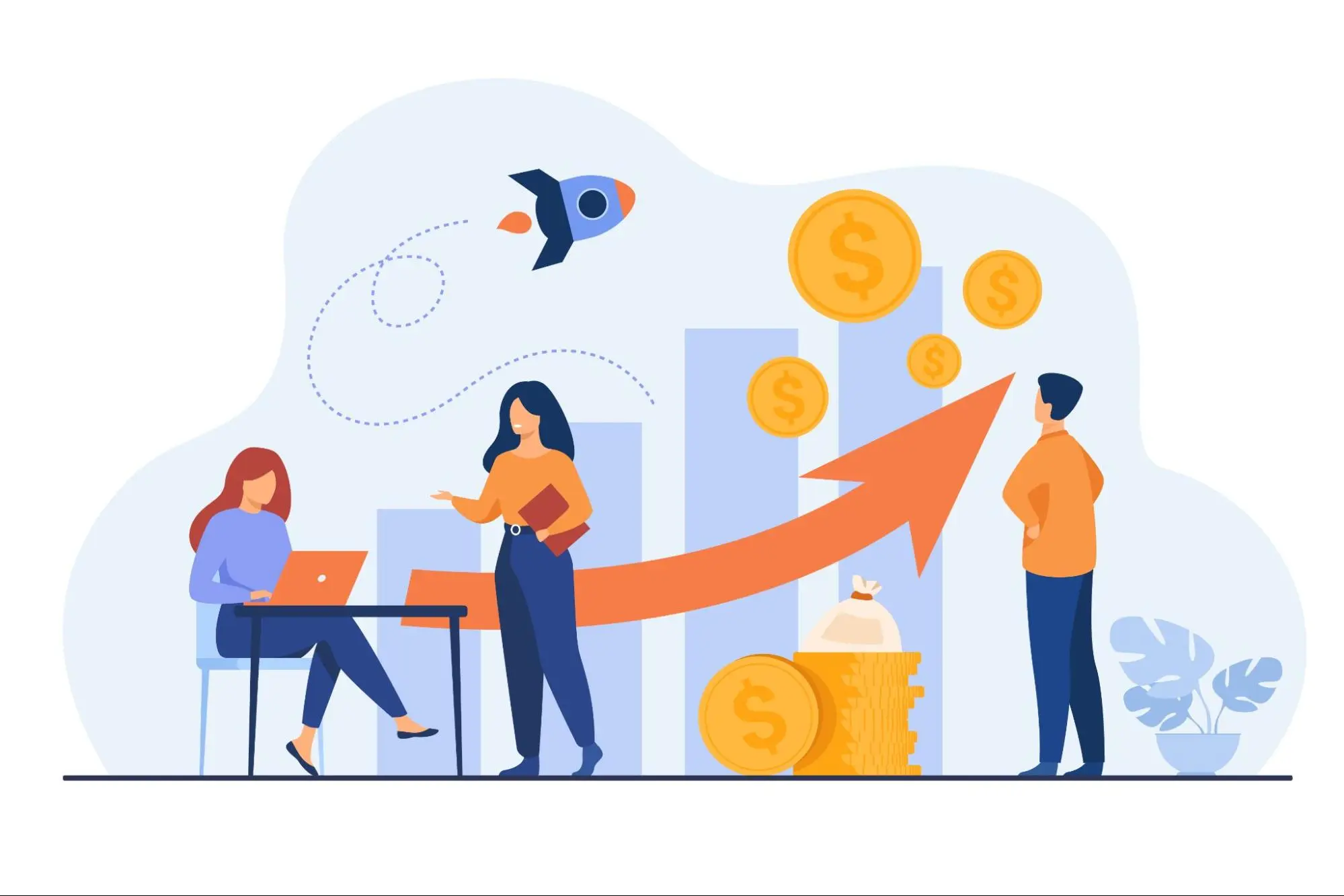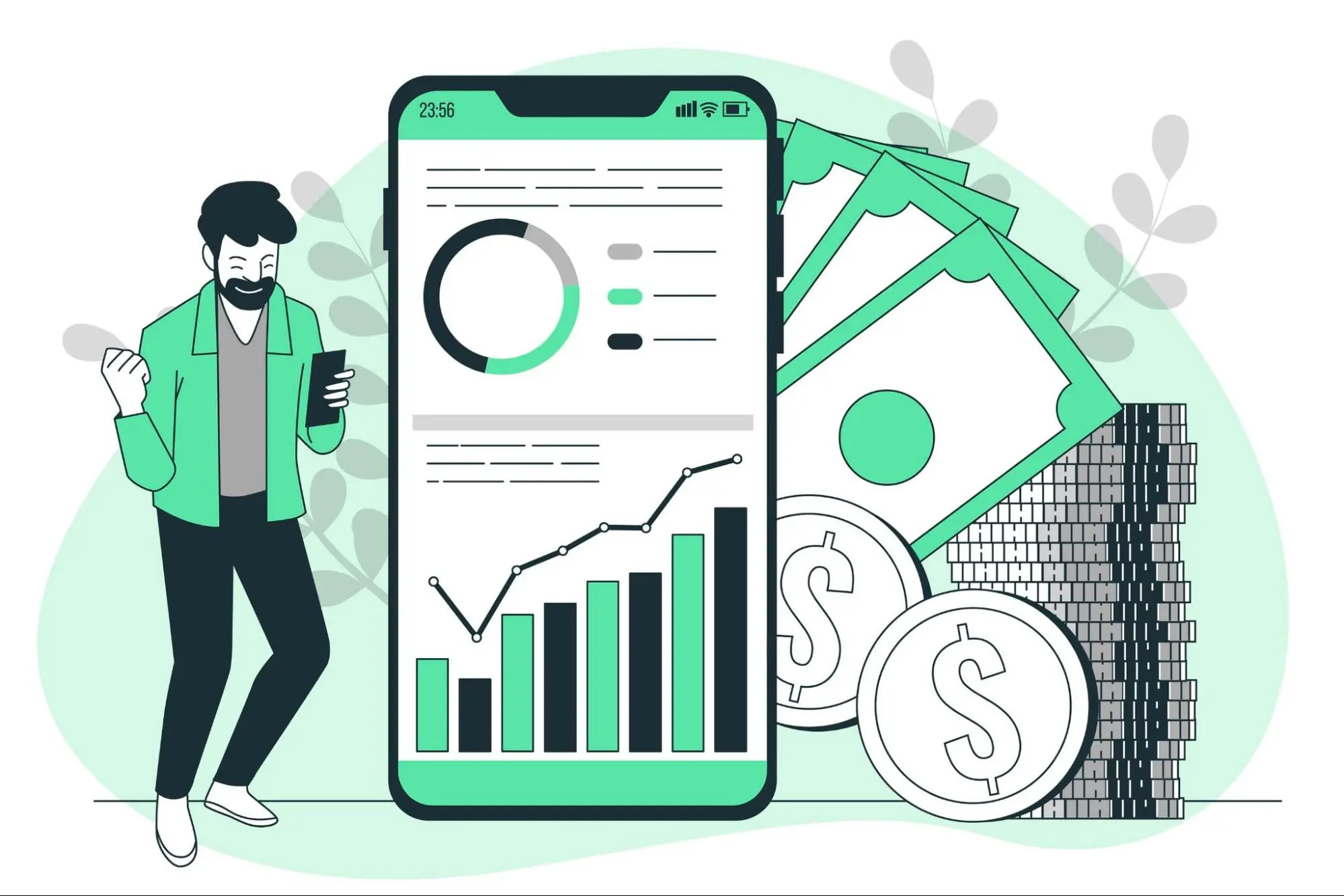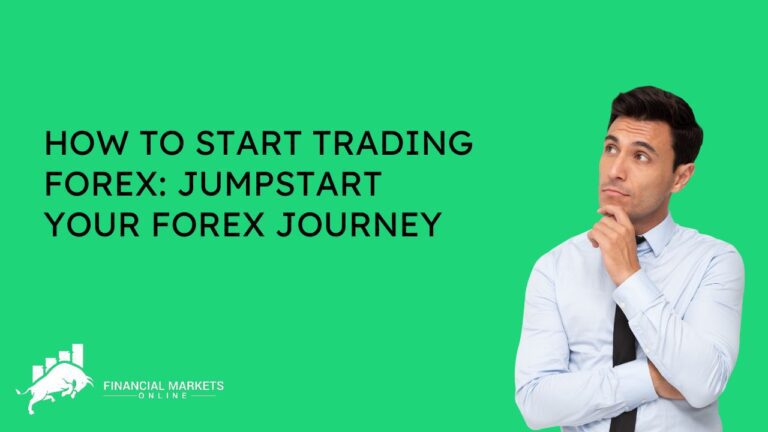From 2021 to 2026, the foreign exchange market’s market share is predicted to grow by USD 1.94 trillion at an 8.87% CAGR. Are you curious about the forex trading industry but unsure of where to start? Don’t worry; we’ll walk you through the steps of starting foreign currency trading in this blog post.
This guide will give you useful information about how to start trading Forex, regardless of your level of experience in trading. It is ideal for beginners wishing to dabble in the market as well as seasoned traders trying to improve.
What is the Forex Market?
Let’s first review the basics of the forex market and the reasons it has grown in popularity as a trading platform. Foreign exchange, or forex, is the abbreviation for the worldwide decentralised currency market. This is the world’s largest financial market, with trillions of dollars changing hands every day.
Through an electronic network of banks, financial institutions, and individual traders, the currency market is run. Forex trading occurs over-the-counter (OTC), as opposed to stock markets, which have physical exchanges. With trading centers spread throughout several time zones across the globe, this market operates around the clock, enabling traders to participate at any moment.
How it Works?

Now that we are familiar with the fundamentals of the currency market, let’s investigate its operation. Currencies are traded in pairs while trading forex. The EUR/USD pair, for instance, has the euro as the base currency and the US dollar as the quote currency. The pair’s value is based on the exchange rate between these two currencies.
You must predict whether the value of a currency pair will increase or decrease in order to benefit from forex trading. Buying the pair is called “going long” if you think the value will rise. On the other side, you would sell the pair—a strategy known as selling short—if you anticipated a drop in value. Depending on your trading technique, the objective is to either buy low and sell high or sell high and purchase low.
Types of Markets
It’s critical to comprehend the several market kinds that are accessible for trading before embarking on your forex adventure. The spot market, where currencies are bought and sold for prompt delivery, is the main market. It’s the most popular and simple way to trade foreign exchange.
Furthermore, there are markets for futures and options, which give traders the chance to purchase or sell currencies later, giving them more alternatives for risk management and flexibility.
Utilising Forex Exchanges
There are a few crucial actions you must do in order to get your forex trading career started. Learn about the many tactics used in forex trading. An excellent way to learn and hone your trading skills is through taking online trading classes.
Seek out respectable online trading courses that address risk management, technical analysis, trading psychology, and the fundamentals. You will gain the knowledge and skills needed to make wise trading decisions from these online trading courses.
1. Select a trustworthy forex dealer.
By serving as a go-between for the forex market, a broker gives you access to trading platforms, market data, and customer service. Seek out brokers with a solid reputation, affordable fees, competitive spreads, and an easy-to-use interface.
2. Create an account to trade.
Create a trading account after selecting a broker. To meet the demands of different traders, most brokers provide a variety of account kinds. Think about things like options for leverage, minimum deposit criteria, and account kinds that work best for your trading style.
Once your trading account is setup, become acquainted with the trading platform. Discover how to use pertinent market analysis tools, place stop-loss orders, and execute trades. Before risking real money, practice using the platform on a demo account to build confidence and polish your trading techniques.
Protecting your cash and ensuring market longevity can be achieved by putting appropriate risk management strategies into practice, such as establishing stop-loss orders and figuring out your risk-reward ratio.
How to Start Trading Forex?

Making money off of changes in exchange rates is the aim. Take into consideration the following actions to start trading forex:
1. Learn for Yourself:
Spend some time studying the foundations of forex trading. Online trading classes can offer important information and insights into technical analysis, trading tactics, and market dynamics.
2. Select a Trustworthy Broker:
It’s crucial to pick the best forex broker. Seek out a broker who has strong trading platforms, competitive spreads, and attentive customer service.
3. Create an Account to Trade:
Open a trading account after selecting a broker. You will then be able to enter the forex market and begin placing trades.
4. Utilise a Demo Account to Practice:
The majority of brokers let you trade with virtual money on demo accounts. Use this as an opportunity to hone your trading techniques and acquire expertise without having to risk real money.
5. Create a Trading Strategy:
Your objectives, risk tolerance, and trading methods are all outlined in your trading plan. It supports your ability to trade with attention and discipline.
Risk Management Tools to Start Forex Trading

An essential component of FX trading is risk control. Use the following risk management methods to safeguard your investment and reduce potential losses:
1. Orders for Stop Loss:
An automatic order that automatically closes your position at a pre-specified price level is called a stop-loss order. If you lose money in the market, it helps to reduce your losses.
2. Accept Profit Requests:
An automatic order that closes your trade at a predetermined profit target is called a take-profit order. When the market turns in your favor, you can use it to lock in your earnings.
3. Ratio of Risk-Reward:
You can evaluate the possible profit of a trade in relation to the risk assumed by using a risk-reward ratio. Seek out transactions where the possible gain outweighs the associated risk.
4. Size of Position:
Determining the right amount of capital to risk on each trade is known as position size. By doing this, you can control your overall risk and stay out of danger. Professional Forex traders normally invest only 1-3% of their capital per trade to adequately manage risks.
How to Start Trading Forex Online Using Trading Strategies?

Having a diverse range of trading tactics in your toolbox is crucial for being a profitable FX trader. Let’s examine several well-liked tactics that might guide you through the currency market or you’ll get to know about how to start trading Forex:
1. Methodical Evaluation
Technical analysis is the process of examining past price data and predicting future price movements by utilising a variety of indicators to spot trends. Moving averages, trendlines, support and resistance levels, and oscillators such as the Moving Average Convergence Divergence (MACD) and Relative Strength Index (RSI) are common technical analysis tools.
2. Essential Evaluation
Evaluating political, social, and economic variables that may have an impact on currency prices is the main goal of fundamental analysis. Analysing economic data, press statements, and geopolitical developments are all part of this. Based on economic fundamentals, the goal of fundamental traders is to find undervalued or overvalued currencies.
3. Ratio of Risk-Reward
In trading, the risk-reward ratio is a crucial idea. It weighs the possible reward from a deal against the possible risk. When the potential benefit surpasses the danger, a deal with a good risk-reward ratio is what traders strive for.
How to Get Started with Forex Trading Brokers

Selecting the appropriate FX trading broker is essential to your trading success. When choosing a broker, take into account the following important factors:
Regulatory Compliance: Verify that a respectable financial authority regulates the broker. This adds an extra degree of security for your money.
Trading Platform: It is imperative to have a dependable and easy-to-use trading platform. Seek for a platform that provides order execution capabilities, real-time market data, and sophisticated charting tools.
Customer Service: Verify the broker’s options and turnaround time for customer service. It’s critical to have quick access to help when you need it.
Fees and Spreads: Evaluate the spreads and fees that various brokers are offering. Your trading profitability can be greatly impacted by competitive fees and low spreads.
Educational Resources: To assist you become a better trader, a reputable broker will offer you analysis tools and educational materials.
Forex Terminology
Let’s get acquainted with some popular forex lingo before we dive into the techniques. Gaining confidence in your ability to navigate the trading world will come from knowing these terminology.
Pip:
In forex trading, a pip is the smallest unit of measurement. In terms of exchange rates, it stands for the fourth decimal place. In most currency pairs, 0.0001 is equal to one pip.
Exchange Pair:
Trading forex entails purchasing one currency while selling another. The two currencies being traded are represented by the currency pair. For instance, the euro is the base currency and the US dollar is the quote currency in the EUR/USD pair.
Ask-Bid Spread:
The difference between a currency pair’s purchase (bid) and selling (ask) values is known as the bid-ask spread. It usually has a unit of measurement of pip and indicates the cost of executing a trade.
Take-Age:
With leverage, you may manage sizable positions with a smaller initial investment. It shows how much you can increase your initial investment by to open a larger trade position and is expressed as a ratio (e.g., 1:100). Leverage can improve profits, but it also raises the possibility of losing money.
Margin:
The sum of money needed to initiate a leveraged position is known as the margin. It is usually a portion of the entire trade size and serves as a deposit or collateral for the trade.
Halt loss:
An order to exit a trade at a particular price in order to reduce possible losses is known as a stop-loss order. It is a risk management instrument that aids in safeguarding your investment in the event that the market declines.
After going over some basic terms related to forex, let’s move on to some basic trading methods to get you started.
Basic Forex Trading Strategies
These techniques are intended to assist you in navigating the volatile forex market and making wise trading selections. To grasp these tactics, keep in mind that experience and practice are essential.
Trend Completing:
This tactic entails spotting and adhering to current market trends. This trading technique looks for currency pairs that are moving steadily in one direction, either upward or downward, and the trader’s goal is to ride the trend until it starts to show symptoms of turning around.
Trading in Range:
Finding the levels of support and resistance that a currency pair is moving within is the process of range trading. By employing this method, traders hope to sell at resistance levels and buy at support ones. When there are no obvious patterns in the industry, this approach performs effectively.
Trading Breakout:
Buying a position when the price breaches a key level of support or resistance is known as breakout trading. This approach allows traders to profit from the increased momentum and volatility that frequently follows a breakout.
News Exchange:
Taking advantage of market volatility brought on by noteworthy political or economic events is known as news trading. This strategy’s traders keep a close eye on economic data, news releases, and geopolitical events in order to anticipate market moves and adjust their positions accordingly.
Inverting:
A short-term trading technique called scalping seeks to make money off of minute changes in price. Traders who employ this method frequently capture tiny gains throughout the day by entering and exiting deals rapidly—often in a matter of minutes or seconds.
Recall that these are merely a few fundamental tactics to get you going. You can experiment with more complex techniques and customise them to fit your trading style as you acquire expertise and understanding.
Charts Used in Forex Trading
Forex charts come in a variety of forms, each with unique benefits and traits. Let’s examine the three most popular kinds:
1. Line Diagrams
The most basic kind of forex chart is a line chart. A line joining the closing prices for every interval is shown. While line charts offer a broad overview of the overall price trend, they do not display specific details regarding price changes inside each period. They are helpful in determining long-term patterns as well as levels of support and opposition.
2. Bar Diagrams
Compared to line charts, bar charts, sometimes called OHLC (open-high-low-close) charts, offer more precise information. With the initial price shown on the left, the closing price on the right, and the highest and lowest prices as vertical bars (sometimes known as “wicks”) extending from the horizontal lines, each bar represents a distinct time interval. Traders can examine price ranges, trends, and volatility inside each interval using bar charts.
3. Charts with Candles
The most common and extensively utilised kind of forex charts are candlestick charts. They show the open, high, low, and close prices for each time period, much like bar charts do. Candlestick charts, on the other hand, provide this data in a more understandable and visual manner.
Every interval is depicted as a “candle” with lines rising from the top and bottom to symbolise the high and low values, and a rectangular body representing the open and close prices. Whether the closing price was greater (usually green or white) or lower (usually red or black) than the opening price is indicated by the color of the body. Candlestick charts are useful for spotting patterns that indicate possible trend reversals or continuations, such as hammers, dojis, and engulfing patterns.
Pros and Cons of Trading Forex
The benefits and drawbacks of forex trading are distinct. We shall examine the benefits and drawbacks of FX trading.
Pros of Forex Trading:
24-hour Market: Traders have the freedom to trade whenever they choose, as the forex market is open for business twenty-four hours a day, five days a week. This is especially helpful for people who have other obligations during regular business hours.
High Liquidity: The forex market has a daily trading volume of more than $6 trillion, making it extremely liquid. Quick position entry and exit allows for improved price execution and cheaper transaction costs for traders.
Leverage: High leverage is provided by forex brokers, enabling traders to manage bigger positions with less capital. This has the potential to greatly increase profits. But it’s crucial to remember that leverage can amplify losses as well, so use caution while using it.
Global Market Access: By enabling traders to trade currency pairs from all over the world, forex trading provides them with access to a global market. This offers lots of chances for exposure to other economies and geopolitical developments as well as diversity.
Cons of Forex Trading:
High Risk: There is a significant chance that you could lose all or most of your investment when trading forex. Success in the market demands knowledge, experience, and self-control.
Volatility: The forex market is notorious for its high levels of volatility, which can cause abrupt and significant changes in prices. Volatility raises the possibility of loss even as it presents potential for gain.
Complexity: For newcomers in particular, forex trading can be somewhat complicated. It necessitates an awareness of the many variables that affect currency prices, including market mood, political developments, and economic statistics.
Emotional Stress: Trading foreign exchange may be emotionally taxing, particularly when there are losses or when a trade doesn’t turn out as planned. To prevent acting rashly, traders must control their emotions and engage in disciplined trading.
Conclusion
Although there are financial potential in forex trading, there are risks as well. When trading forex, traders should carefully weigh the advantages and disadvantages. To be successful in forex trading, one must have a solid grasp of the market, create a winning trading strategy, and successfully manage risk.
It can be thrilling and lucrative to begin trading forex. You can navigate the forex market with confidence and improve your chances of success if you are committed, disciplined, and learning new things constantly.
Frequently Asked Questions
1. How to Start Trading Forex?
To start trading forex, beginners should consider taking online trading courses to gain a fundamental understanding of the market, including currency pairs, technical analysis, and risk management.
2. Are online trading courses necessary for aspiring forex traders?
While not mandatory, online trading courses are highly recommended. They provide essential knowledge and strategies that can help beginners navigate the complexities of the forex market more effectively.
3. Can I learn to trade forex solely through online trading courses?
Online trading courses are an excellent starting point, but practical experience is essential. Consider practicing with a demo account to apply what you’ve learned and gain confidence before trading with real money.
4. What’s the advantage of combining online trading courses with real trading experience?
Combining online trading courses with real trading experience helps traders apply theory to practice. It allows them to refine their strategies, develop their trading style, and better understand the emotional aspects of trading.
5. How long does it take to start trading forex after completing online courses?
The duration varies from person to person, but it’s essential not to rush. Take the time to thoroughly understand the concepts and gain confidence in your abilities. Transition to live trading only when you feel prepared and have practiced sufficiently on a demo account.



